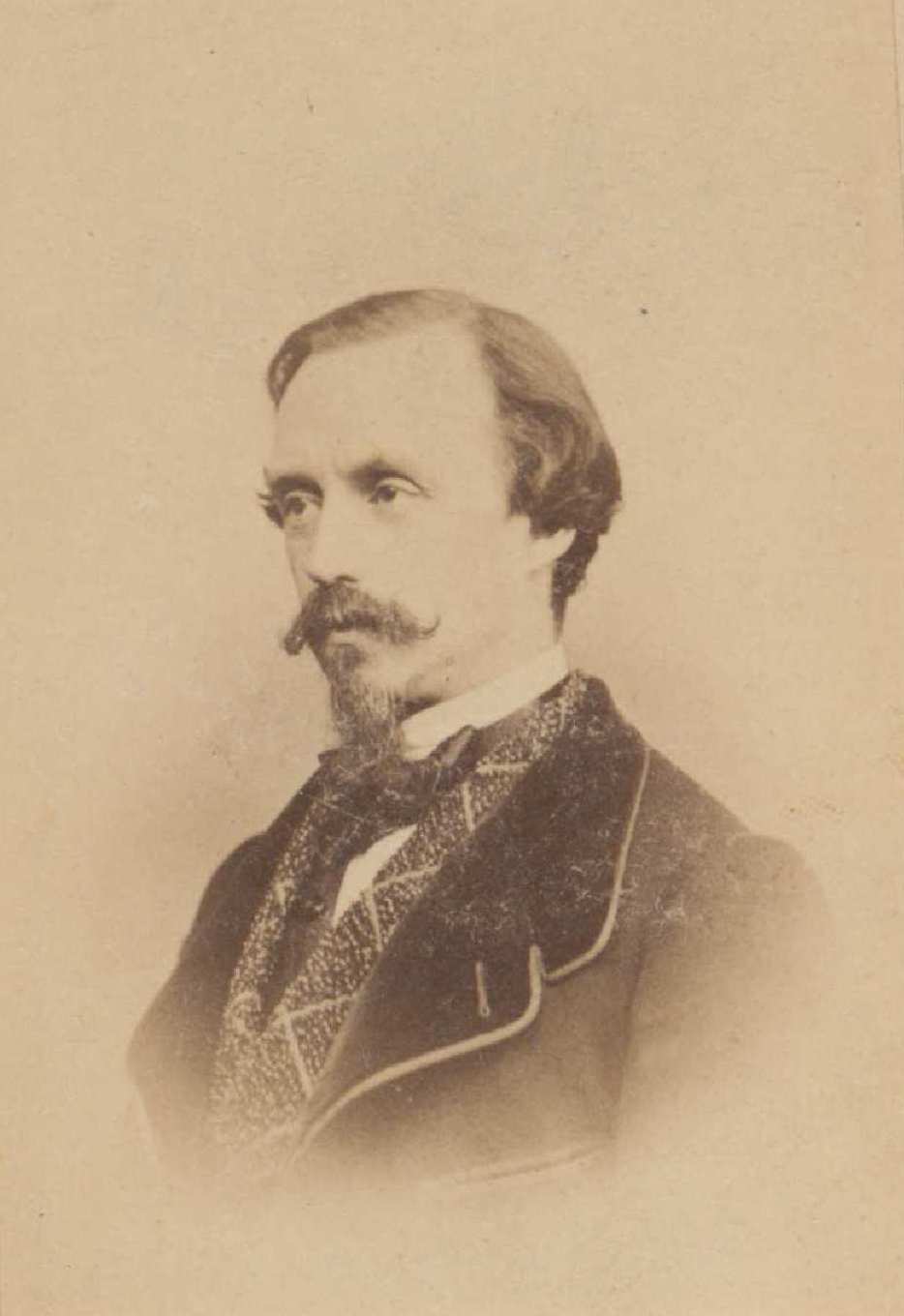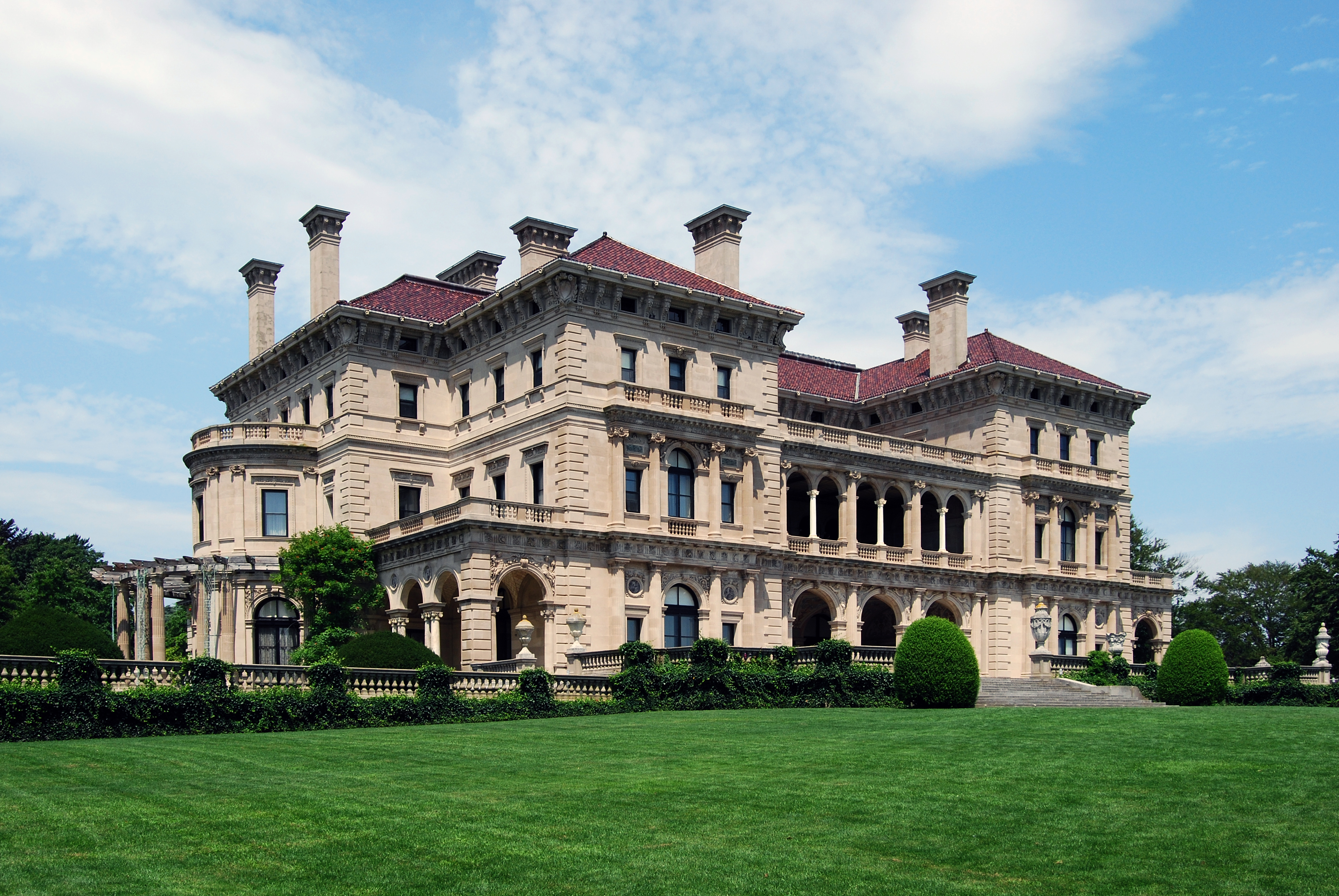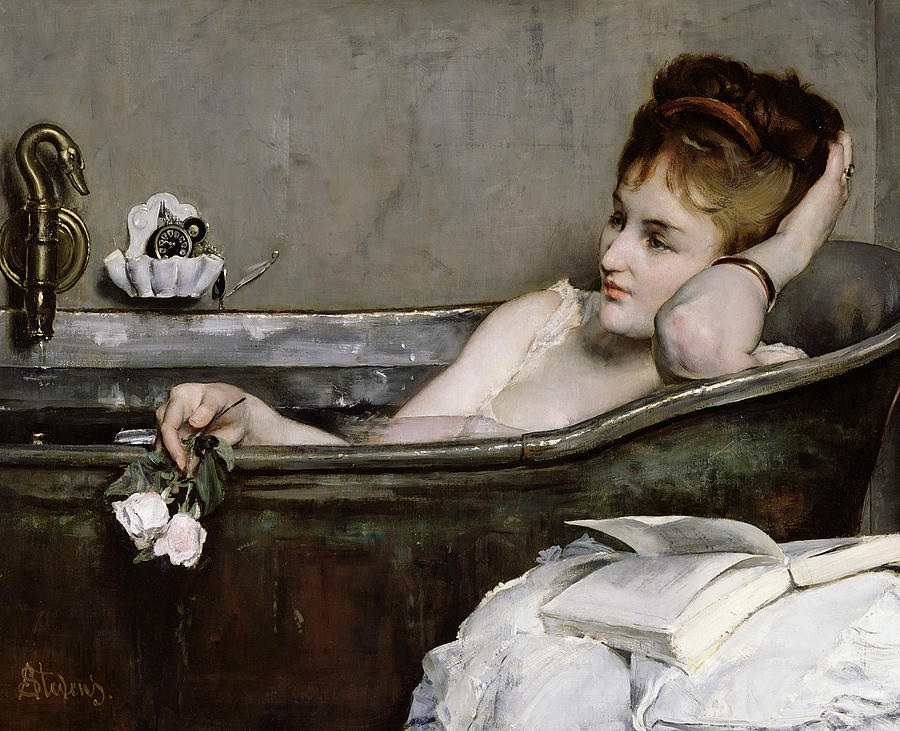|
Raimundo De Madrazo
Raimundo de Madrazo y Garreta (24 July 1841 – 15 September 1920) was a Spanish painter from the Madrazo family of artists who worked in the Realistic style, although his later work shows signs of Rococo and Japanese influence. He was known primarily for his genre paintings and portraits. His grandfather was José de Madrazo, his father was the portrait painter Federico de Madrazo and his brother was Ricardo de Madrazo. Biography He was born in Rome into a family of artists with a noble background. His grandfather was José de Madrazo, the painter and former Director of the Museo del Prado; his father was Federico de Madrazo, also a painter; his uncles were Luis de Madrazo, a painter, Pedro de Madrazo, an art critic and Juan de Madrazo, an architect; while his brother was Ricardo de Madrazo, also a painter. His maternal grandfather was Tadeusz Kuntze, a Polish painter. The Madrazo family have been described as one of the most important painting dynasties, who literally domin ... [...More Info...] [...Related Items...] OR: [Wikipedia] [Google] [Baidu] |
Federico De Madrazo
Federico de Madrazo y Kuntz (9 February 181510 June 1894) was a Spanish painter. Biography Born in Rome, he was the son of José de Madrazo y Agudo, the painter and former Director of the Prado Museum. Federico's grandfather on his mother side was Tadeusz Kuntze, a Polish painter. His brothers were Luis de Madrazo, a painter, Pedro de Madrazo, an art critic and Juan de Madrazo, an architect. Among his children were Ricardo de Madrazo, also a painter, Raimundo de Madrazo y Garreta and Cecilia de Madrazo who married the great Orientalist artist, Marià Fortuny. The Madrazo family have been described as one of the most important painting dynasties, who literally dominated 19th-century painting in Spain.''Los Madrazo, una familia de artistas: [Exhibition],'' Museo Municipal, 1985 [catálogo de la exposición, tapa del libro] He received his first instruction from his father. While still attending the classes at the Royal Academy of San Fernando, he painted his first picture, ''The R ... [...More Info...] [...Related Items...] OR: [Wikipedia] [Google] [Baidu] |
Pedro De Madrazo
Pedro de Madrazo y Kuntz (11 October 1816, Rome - 20 August 1898, Madrid) was a Spanish painter, jurist, writer, translator and art critic. Biography He came from an illustrious family of artists. His father was the painter José de Madrazo y Agudo and his mother, Isabel Kuntz Valentini, was a daughter of the Polish painter, Tadeusz Kuntze. Two of his brothers, Federico de Madrazo and Luis de Madrazo were also painters. His sister, Carlota, married the editor of the journal, ''El Artista'', Eugenio de Ochoa.Ignacio Peiró y Gonzalo Pasamar, ''Diccionario Akal de historiadores españoles contemporáneos (1840-1980)''. Madrid: Akal, 2002 He and his brother Federico were born in Rome, while their father was studying there on a grant from King Charles IV. His primary education began in Madrid, at a seminary school operated by the Jesuits. This was followed by legal studies in Toledo and at the University of Valladolid, where he graduated. In 1837, he and Federico traveled to Par ... [...More Info...] [...Related Items...] OR: [Wikipedia] [Google] [Baidu] |
Madeleine Lemaire
Madeleine Lemaire, ''née'' Coll (1845 – 8 April 1928), was a French painter who specialized in elegant genre works and flowers. Robert de Montesquiou said she was ''The Empress of the Roses''. She introduced Marcel Proust and Reynaldo Hahn to the Parisian salons of the aristocracy. She herself held a ''salon'' where she received high society in her ''hôtel particulier'' on the Rue de Monceau. Lemaire exhibited her work at the Palace of Fine Arts and The Woman's Building at the 1893 World's Columbian Exposition in Chicago, Illinois. George Painter stated in his book ''Marcel Proust'' she is one of the models of Proust's Madame Verdurin (''In Search of Lost Time ''In Search of Lost Time'' (french: À la recherche du temps perdu), first translated into English as ''Remembrance of Things Past'', and sometimes referred to in French as ''La Recherche'' (''The Search''), is a novel in seven volumes by French ...''). Links ''The Salon of Mme Madeleine Lemaire'' [...More Info...] [...Related Items...] OR: [Wikipedia] [Google] [Baidu] |
Exposition Universelle (1889)
The Exposition Universelle of 1889 () was a world's fair held in Paris, France, from 5 May to 31 October 1889. It was the fourth of eight expositions held in the city between 1855 and 1937. It attracted more than thirty-two million visitors. The most famous structure created for the Exposition, and still remaining, is the Eiffel Tower. Organization The Exposition was held to celebrate the 100th anniversary of the Storming of the Bastille, which marked the beginning of French Revolution, and was also seen as a way to stimulate the economy and pull France out of an economic recession. The Exposition attracted 61,722 official exhibitors, of whom twenty-five thousand were from outside of France. Admission price Admission to the Exposition cost forty centimes, at a time when the price of an "economy" plate of meat and vegetables in a Paris cafe was ten centimes. Visitors paid an additional price for several of the Exposition's most popular attractions. Climbing the Eiffel Towe ... [...More Info...] [...Related Items...] OR: [Wikipedia] [Google] [Baidu] |
Salon (Paris)
The Salon (french: Salon), or rarely Paris Salon (French: ''Salon de Paris'' ), beginning in 1667 was the official art exhibition of the Académie des Beaux-Arts in Paris. Between 1748 and 1890 it was arguably the greatest annual or biennial art event in the Western world. At the 1761 Salon, thirty-three painters, nine sculptors, and eleven engravers contributed. Levey, Michael. (1993) ''Painting and sculpture in France 1700–1789''. New Haven: Yale University Press, p. 3. From 1881 onward, it has been managed by the Société des Artistes Français. Origins In 1667, the royally sanctioned French institution of art patronage, the Académie royale de peinture et de sculpture (a division of the Académie des beaux-arts), held its first semi-public art exhibit at the Salon Carré. The Salon's original focus was the display of the work of recent graduates of the École des Beaux-Arts, which was created by Cardinal Mazarin, chief minister of France, in 1648. Exhibition at the Salo ... [...More Info...] [...Related Items...] OR: [Wikipedia] [Google] [Baidu] |
Georges Petit
Georges Petit (11 March 1856 – 12 May 1920) was a French art dealer, a key figure in the Paris art world and an important promoter and cultivator of Impressionist artists. Early career Petit was the son of François Petit, who founded the firm of art dealers at 7, rue Saint-Georges (Paris) in 1846. Within just a few years, the ''Galerie François Petit'' was among the most powerful firms in the French art market. According to Robert Jensen in his book ''Marketing Modernism in Fin-de-Siecle Europe'', the auction house assumed, "multiple roles that ran the gamut from certifying the authenticity of the object, to guiding it through the hazards of the marketplace, to establishing its provenance and enlisting critics and historians to situate the artist's importance." Georges Petit inherited the firm, as well as a château and 3 million francs in 1877. He constructed a town house on the rue de Sèze. His annual expenses amounted to some 400,000 francs. That's what he spent ... [...More Info...] [...Related Items...] OR: [Wikipedia] [Google] [Baidu] |
Giuseppe De Nittis
Giuseppe De Nittis (February 25, 1846 – August 21, 1884)Efrem Gisella Calingaert. "De Nittis, Giuseppe." Grove Art Online. Oxford Art Online. Oxford University Press. Web. 9 Aug. 2013. was one of the most important Italian painters of the 19th century, whose work merges the styles of Salon art and Impressionism. Biography De Nittis was born in Barletta, in the region of Apulia, where he lived with his family in the wealthiest district of the city near the intersection of the Corso Vittorio Emanuele and the Corso Garibaldi, just around the corner from the birthplace of another famous painter and contemporary, Geremia Discanno. Barletta at the time of the Bourbons, and in particular during the reign of Ferdinand II, nicknamed the "Bomb King" for having his own subjects cannonaded, was an extremely class-oriented city and those who could afford it gathered regularly near De Nittis' home beneath the Basilica of the Holy Sepulcher with its bronze Colossus of Heraclius in front. Si ... [...More Info...] [...Related Items...] OR: [Wikipedia] [Google] [Baidu] |
Alexander Turney Stewart
Alexander Turney Stewart (October 12, 1803 – April 10, 1876) was an American entrepreneur who moved to New York and made his multimillion-dollar fortune in the most extensive and lucrative dry goods store in the world. Stewart was born in Lisburn, Ulster, Ireland, and abandoned his original aspirations of becoming a Presbyterian minister to go to New York City in 1823. He spent a short time teaching before returning to Ireland to receive the money his grandfather had left him, purchase some Belfast linens and laces, and return to New York to open a store. Stewart had extraordinary skill in business, and by 1848 he had built a large marble-fronted store on Broadway between Chambers Street and Reade Street, which was devoted to the wholesale branch of his business. In 1862 he built a new store covering an entire city block between Broadway and Fourth Avenue and between 9th and 10th streets. It was eight stories tall and attracted the wonder and business of upscale New York. T ... [...More Info...] [...Related Items...] OR: [Wikipedia] [Google] [Baidu] |
Vanderbilt Family
The Vanderbilt family is an American family who gained prominence during the Gilded Age. Their success began with the shipping and railroad empires of Cornelius Vanderbilt, and the family expanded into various other areas of industry and philanthropy. Cornelius Vanderbilt's descendants went on to build grand mansions on Fifth Avenue in New York City; luxurious "summer cottages" in Newport, Rhode Island; the palatial Biltmore House in Asheville, North Carolina; and various other opulent homes. The Vanderbilts were once the wealthiest family in the United States. Cornelius Vanderbilt was the richest American until his death in 1877. After that, his son William Henry Vanderbilt acquired his father's fortune, and was the richest American until his death in 1885. The Vanderbilts' prominence lasted until the mid-20th century, when the family's 10 great Fifth Avenue mansions were torn down, and most other Vanderbilt houses were sold or turned into museums in what has been referred to ... [...More Info...] [...Related Items...] OR: [Wikipedia] [Google] [Baidu] |
Alfred Stevens (painter)
Alfred Émile Léopold Stevens (11 May 182324 August 1906) was a Belgian painter, known for his paintings of elegant modern women. In their realistic style and careful finish, his works reveal the influence of 17th-century Dutch genre painting. After gaining attention early in his career with a social realist painting depicting the plight of poor vagrants, he achieved great critical and popular success with his scenes of upper-middle class Parisian life. He tended to use the same models over and over again, and not all of them were aristocratic. "At least three of his frequent models can be identified in the infamous Book of the Courtesans, a top secret leather bound book containing the surveillance files of the Paris vice squad," writes author SummeBrennan Family background Stevens was born in Brussels. He came from a family involved with the visual arts: his older brother Joseph (1816–1892) and his son Léopold (1866–1935) were painters, while another brother Arthur (1825� ... [...More Info...] [...Related Items...] OR: [Wikipedia] [Google] [Baidu] |
Léon Cogniet
Léon Cogniet (29 August 1794 – 20 November 1880) was a French history and portrait painter. He is probably best remembered as a teacher, with more than one hundred notable students. Biography He was born in Paris. His father was a painter and wallpaper designer. In 1812, he enrolled at the École des Beaux-arts, where he studied with Pierre-Narcisse Guérin. He also worked in the studios of Jean-Victor Bertin. After failing an attempt to win the Prix de Rome in 1816, he won the following year with his depiction of ''Helen Rescued by Castor and Pollux''Grunchec, P. (1985). ''The Grand Prix de Rome: Paintings from the École des Beaux-Arts, 1797-1863''. Washington, DC: International Exhibitions Foundation. p. 66. . and received a stipend to study at the French Academy in Rome until 1822. Before leaving, he had his first exhibition at the Salon (Paris), Salon. In 1827, he created a series of murals on the life of Saint Stephen for the church of Saint-Nicholas-des-Champs, Pari ... [...More Info...] [...Related Items...] OR: [Wikipedia] [Google] [Baidu] |
Carlos De Haes
Carlos Sebastián Pedro Hubert de Haes (January 25, 1829 – June 17, 1898) was a Spanish painter from Belgium.Caso, E. F., ''Les Orientalistes de l'école Espagnole,'' ACR edition, 1997, p. 128 He was noted for the Realism in his landscapes, and was considered to be the "first contemporary Spanish artist able to capture something of a particularly Spanish 'essence' in his work". He was cited along with Jenaro Perez Villaamil and Aureliano de Beruete as one of the three Spanish grand masters of landscape painting, the latter of which was his pupil. In the 1850s, Haes was involved in the rise of the Realist school of landscape. Coincidentally his landscape and wildlife paintings of the Monasterio de Piedra occurred at the time of an academic opening for the Painting School of the Real Academia de Bellas Artes de San Fernando, the selection to be made by a landscape competition. In 1857 he became the first professor of landscape painting, the first in Spain to teach painting dir ... [...More Info...] [...Related Items...] OR: [Wikipedia] [Google] [Baidu] |










